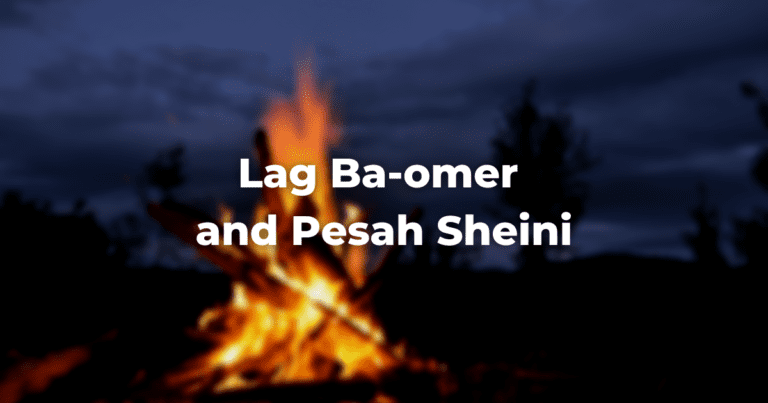In a small black-and-white framed Polaroid photo, a freshly-polished silver candelabra sits on a beautiful white tablecloth. Behind it stands my great-grandmother, a lace kerchief neatly draped over her curly hair, dressed in her “synagogue best.” Her hands gently cover her eyes. Though the photograph is tattered, you can almost hear the traditional blessing recited reverently with a Yiddish-y pronunciation that harkens to our Ashkenazi roots in Poland.
Fast-forward 60 years to another family photo taken to capture another generation’s memories of Shabbat. This one depicts a small gold candle holder (given to me by my synagogue at my bat mitzvah) on an uncovered wooden table. Behind it stands a millennial hair-in-a-bun mom, a slightly unshaven dad, and two wiggly kids, still dressed in school uniforms, caught mid-bounce as they gleefully sing “Shabbat Shalom…Hey!”


Separated by years but connected by tradition, the two photos illustrate the meaning of L’Dor V’Dor, Generation-to-Generation. We have different methods of celebrating, but the spirit of Shabbat is the same.
As my daughter approaches her bat mitzvah, the need for religious continuity strengthens in me. The Hanukkah song imploring, “Don’t let the lights go out,” plays in my head as I explain to her that she must attend her Hebrew lessons AND bat mitzvah lessons AND services. Although she is excited about becoming a bat mitzvah, the journey ahead seems daunting—to us both. Despite our trepidation about being able to rise to the occasion, we both know that she is fortunate, unlike my great-grandmother in the photo from a generation who, for many reasons, was not given the opportunity. “Don’t let the lights go out.” The song echos in my head—it will not be us who “lets the light go out.”
But what does keeping the metaphorical lights on mean in a modern world?
I have always tried to adapt Jewish tradition to our modern lives. We said a “Shehecheyanu” blessing when my kids wore their big-kid underwear for the first time, and when they lost their first teeth. We try to recite Shema when we see a rainbow to make the moment special and thank G-d for “everyday miracles.” I bought over 100 dreidels to teach about Hanukkah to at least six classes at the kids’ secular elementary school—most had never heard of the holiday, much less the story behind it. Earlier in the year, we created a Sukkah on Minecraft. And as many families do today, I interjected YouTube songs into our Passover seder in an attempt to capture short, internet-dependent attention spans—to teach the kids the story and prevent their Exodus from the seder table. The practices from generation to generation are different, but the values are the same.
Shabbat dinners of “yesteryear” included homemade challah and meticulous roasts; ours looks like we are single-handedly responsible for keeping Uber Eats in business, but the Hamotzi blessing is the same.
Growing up, I remember hiding the car keys as we walked into the synagogue because my grandma was afraid that the rabbi would see that she drove there (living 30 minutes away, we were fooling no one!). Today, we can livestream services from across the country. The method of services is different, but the TorahRefers to the first five books of the Hebrew Bible, the Tanakh, also called the Five Books of Moses, Pentateuch or the Hebrew equivalent, Humash. This is also called the Written Torah. The term may also refer to teachings that expound on Jewish tradition. Read more is the same.
My parents have memories of holidays, Shabbats, and traditions with their grandparents; I have memories of the same things with my grandparents, and my kids are currently creating memories with their grandparents. The pictures of those memories may look different, but the “light” in them is the same.
This essay was submitted as part of Exploring Judaism’s L’Dor V’Dor Essay Contest. To learn more, or submit your own essay, go here.
Author
-

Mandi and her husband, Michael (whom she met on JDate 17 years ago), are the kvelling parents of two kids, Emma (12) and Merit (9). She was born and raised in St. Petersburg, FL, and graduated from the University of Central Florida and Stetson University College of Law. Currently, Mandi works in Maternal Health Advocacy and volunteers for many philanthropies, including serving as the VP of her kids’ school’s PTO and co-chair of her local Hadassah chapter’s female product/diaper drive. In her free time, she loves tasting different French fries and tries to defy the odds and be a “cool mom.”
View all posts




